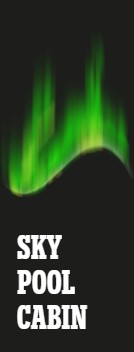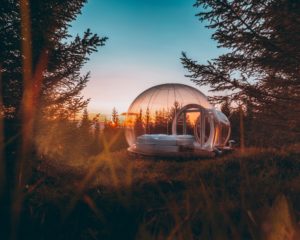About Iceland's Black Sand Beach
By Michael Chapman
The hauntingly beautiful Reynisfjara beach is one of South Iceland's most beloved sites.
About Iceland's Black Sand Beach
By Michael Chapman
The hauntingly beautiful Reynisfjara beach is one of South Iceland's most beloved sites.
With its inky coastlines and stunning highland interior, Iceland has grown into its reputation as a true paradise for those looking to immerse themselves in nature at its most unusual.
Much like its creeping glaciers, mountain peaks, and moss-blanketed lava fields, Iceland’s volcanic beaches draw visitors to this country in their thousands.
Much of this interest can be attributed to Reynisfjara, which has been attracting guests since National Geographic magazine voted it among the top ten of the planet’s most beautiful non-tropical beaches back in 1991.
Neither its reputation nor its beauty has diminished over the years. In fact, with more exposure than ever before, this particular stretch of shoreline could be considered at the height of its popularity. The shoreline’s stark monotone shades, distinctive geology and relative proximity to Iceland’s capital city, Reykjavík, all bolster this fact.
If you’re looking to visit this iconic beach during your travels, make sure to read on and learn all the essential travel information before you arrive.
Why does Iceland have black sand beaches?
Whereas most beaches on Earth are either pebbled or host to golden sands, those in Iceland are dark obsidian in colour.
Generally, sand colour depends on the rocks from which it originated, with tan-coloured quartz and feldspar being the two most common materials found elsewhere.
Iceland, on the other hand, was formed through a series of historical volcanic eruptions. There are over 200 volcanoes on the island, many of which remain active and capable of shaping the terrain around them.
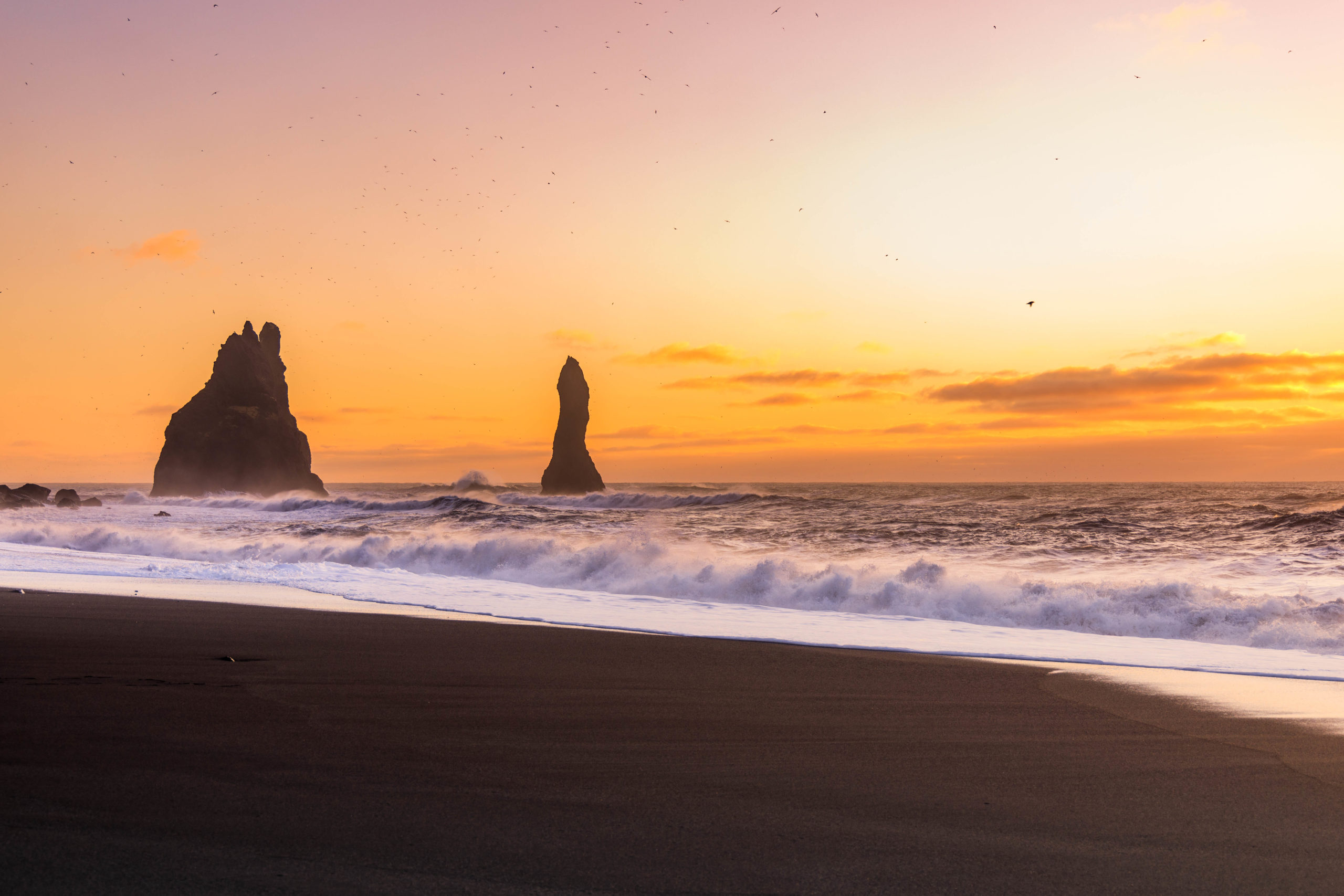
Iceland’s black sand beaches, now famous the world over, are just one of the fascinating geological consequences that have arisen due to these prior eruptions.
When flowing lava contacts seawater, a violent, yet spectacular reaction occurs. The lava enters a rapid cooldown phase immediately, breaking down into tiny debris particles that become scattered over vast distances.
This process does not change the rock’s colour, merely its density, leaving Iceland’s shorelines as a stunning reminder as to how this country’s natural beauty came first about.
PLAN YOUR JOURNEY
Travelling to Iceland?
Check our overnight tours with a driver guide that includes a one night stay in a bubble.
*Starting from ISK 59.900 per person
Why is Reynisfjara considered the best black sand beach in Iceland?
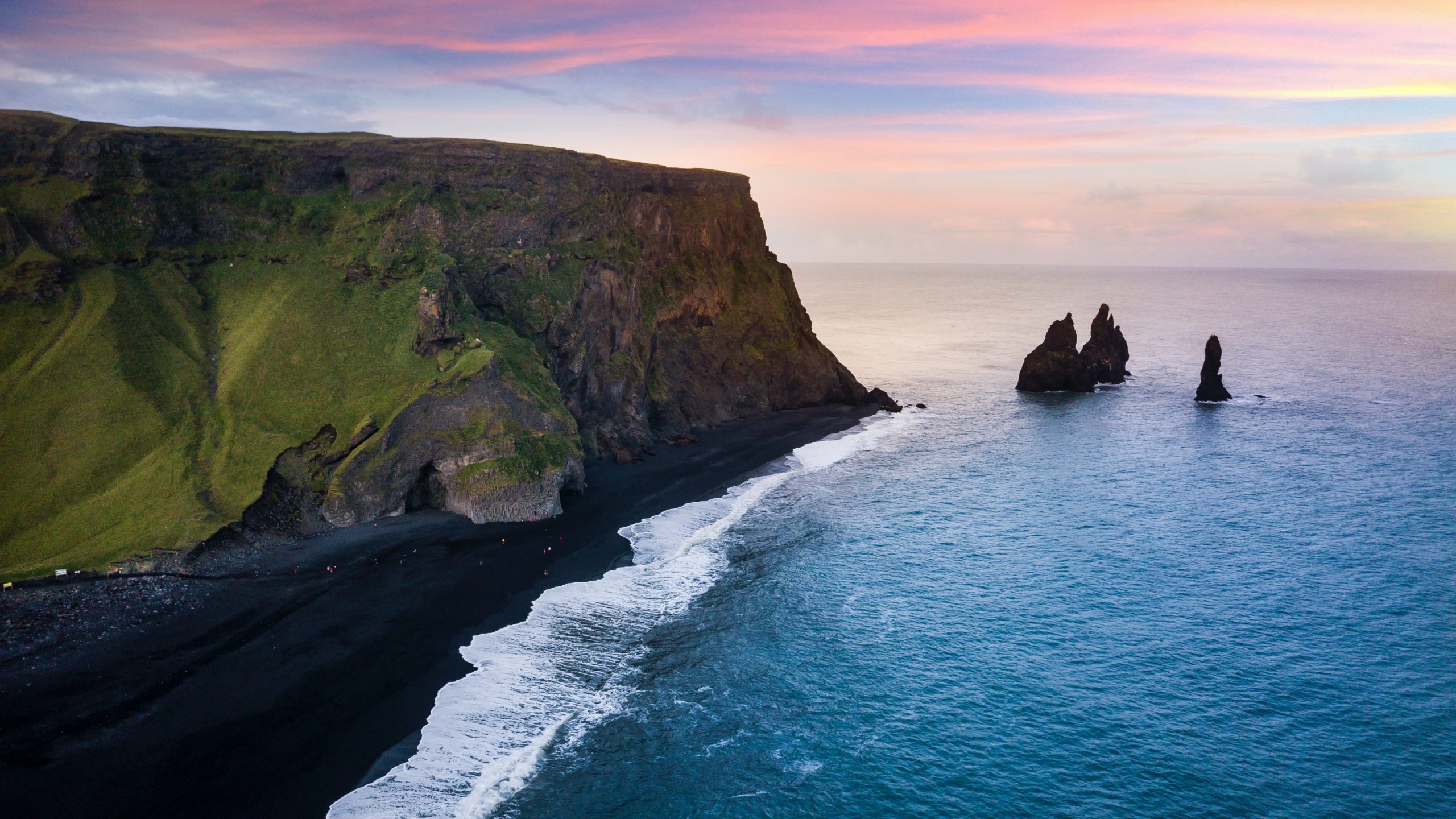
With its unique, jet-black pebbles, peculiar basalt columns and towering rock stack, it is no wonder that Reynisfjara holds an iconic status among Icelandic natural attractions.
Reynisfjara is the most famous of its contemporaries for a variety of reasons. The first is practical, as it is located roughly at the centre-bottom of South Iceland. These coordinates have made it, and the adjacent village of Vík í Mýrdal, popular stops for travellers looking for excitement while passing through the area.
The second reason falls to a cluster of 66-metre high (217 ft) basalt rock stacks that stand off the shoreline. Known as Reynisdrangar, this compelling landmark compliments South Iceland surroundings landscape no-end, adding drama and grand scale to an otherwise remote location.
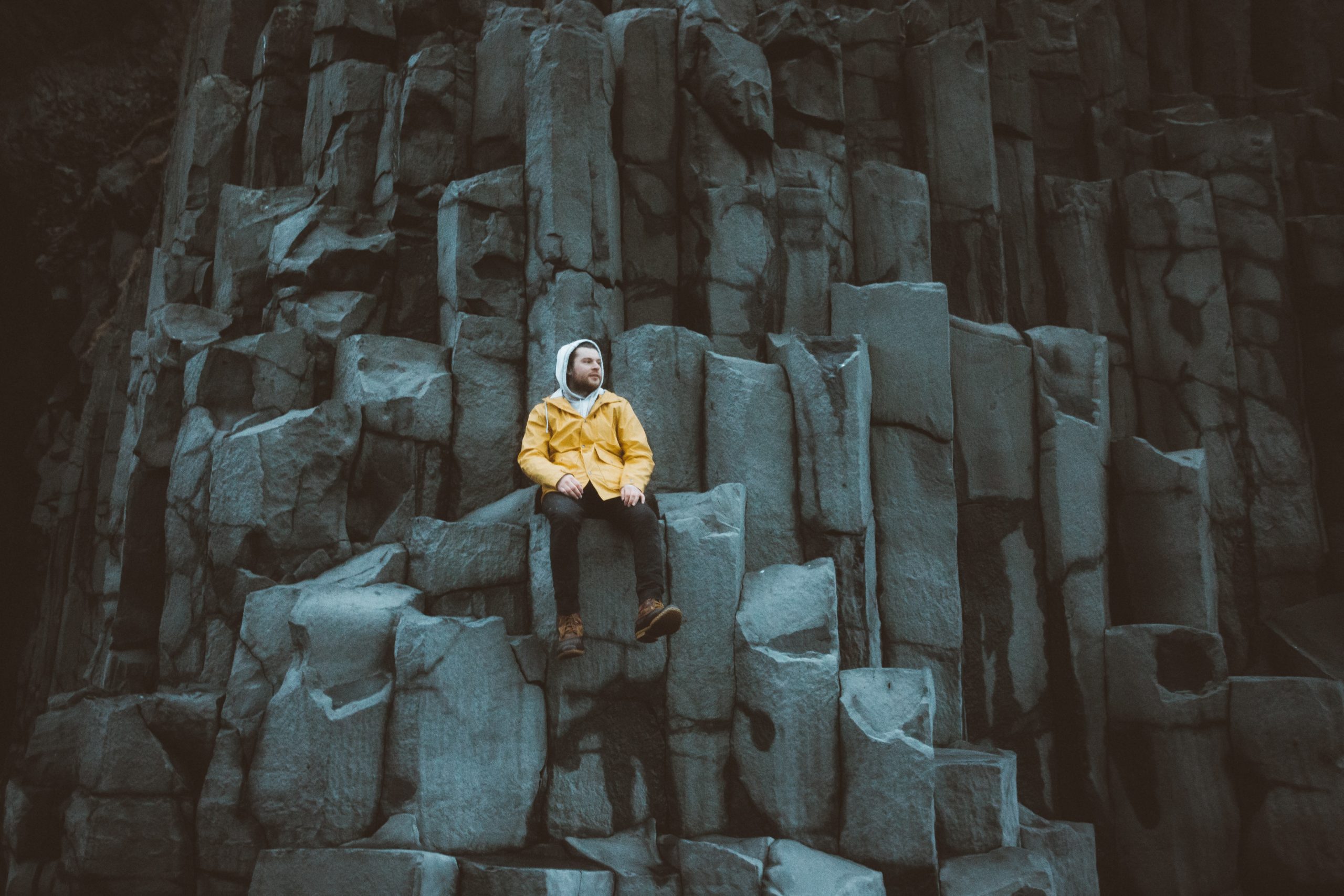
There are even more novelties that make Reynifjara worthy of your interest. On the opposite side to the ocean, the beach is enclosed by steep cliff edges that rise upward like a grey pyramid. Named Garðar after a nearby farmstead, ancient lava flows have shaped the rock face into near-perfect octagonal columns, making them a wonder unto themselves.
Getting photographed sitting atop these naturally formed steps is a matter of tradition for many guests eager to contribute their own pictures to the thousands found across social media.
Further along the beach, Reynisfjara boasts its own pirate’s grotto, a damp seaside cove often overlooked by guests hurrying to pack their days. Known as Hálsanefshellir cave, this enormous chamber sees the distinctive Garðar columns extend across its ceiling and walls, the natural design so intricate as to appear sculpted by hands.
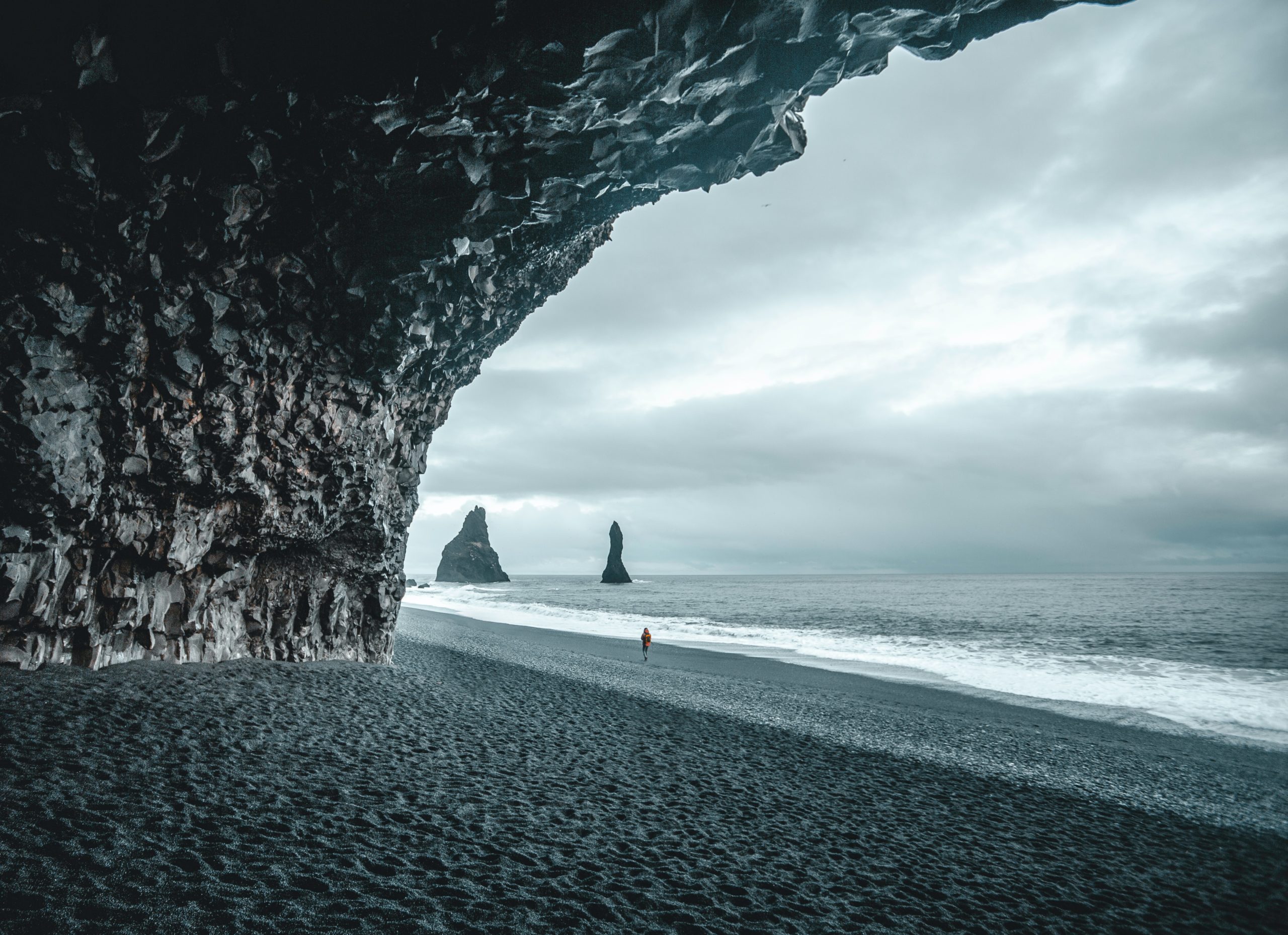
Where is the black sand beach in Iceland
Reynisfjara sits beside the quaint coastal village, Vík í Mýrdal, and is considered a staple stop for sightseeing tours in South Iceland. Despite being home to little more than 300 or so people, Vík (as it is shortened) serves as the optimum spot to grab a bite to eat or bed down for the night.
Reykjavík, where most visitors will be departing, is approximately 180 kilometres (112 miles) to Reynisfjara. Vík í Mýrdal lies directly on Iceland’s Ring Road, meaning guests will have to drive around two and a half hours to reach the beach, not accounting for the pit stops and points-of-interest en route.
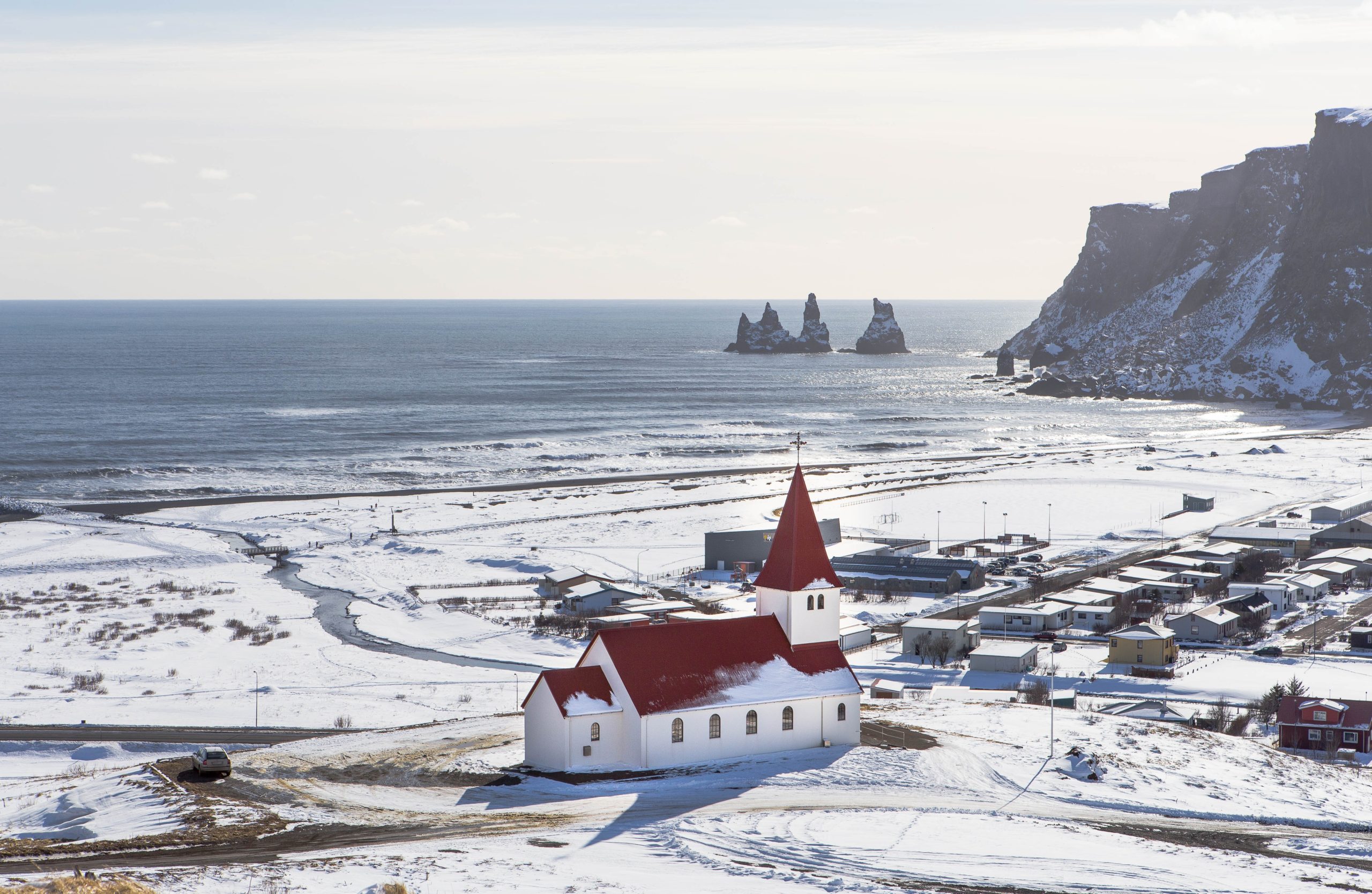
Reynisfjara and Reynisdrangar in Icelandic Folklore
Icelandic folklore is a rich tapestry of ancient tales, passed down generation-to-generation by word-of-mouth and through the Sagas’ epic poetry.
Unsurprisingly, Reynisdrangar has not escaped from inspiring storytellers, with many yarns and anecdotes having been spun about this fantastical place over the last thousand years.
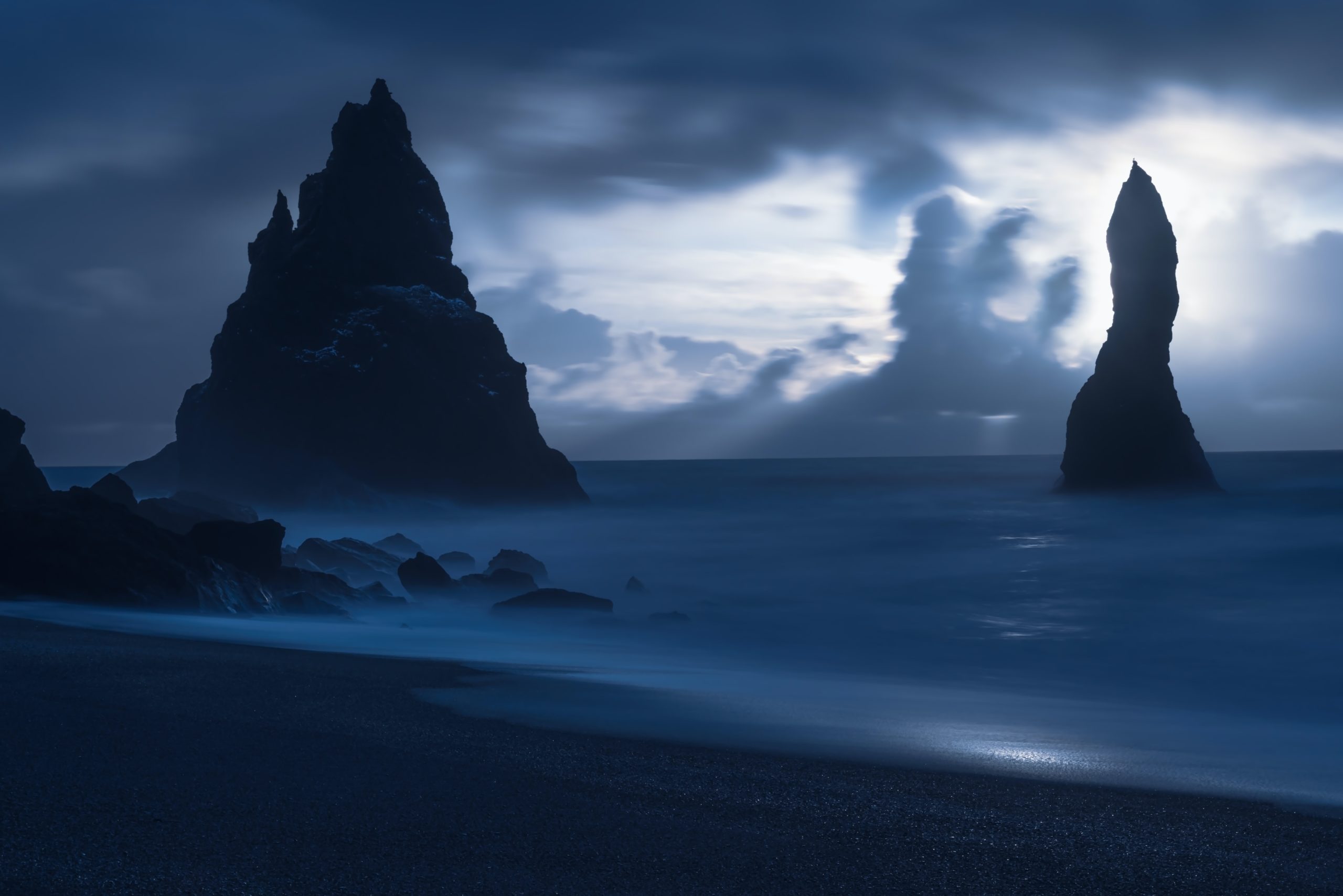
One story speaks of two trolls, now considered extinct in Iceland, caught in the sunlight while dragging their boats to shore. All that was left of their petrified bodies was the Reynisdrangar rock stacks, exposed to the air, sky and waves for the remainder of eternity. Another story claims the same trolls were frozen as revenge for stealing a local farmer’s wife.
In either case, it’s the trolls that got the short-end of the stick (—as trolls are liable to do). While scientists and mystics will differ as to these claims’ veracity, there is no denying the tangible sense of magic, of mystery, this beach draws out of those who visit.
Such thoughts occurred, at one time or another, to the location scouts of HBO’s popular ‘Game of Thrones,’ who utilised Reynisfjara as Eastwatch-by-the-Sea in two episodes of the show’s seventh season. Of course, hours could be spent arguing over whether Game of Thrones constitutes a modern-day folktale, but we thought it was worth mentioning here nonetheless.
Is Reynisfjara black sand beach safe to visit?
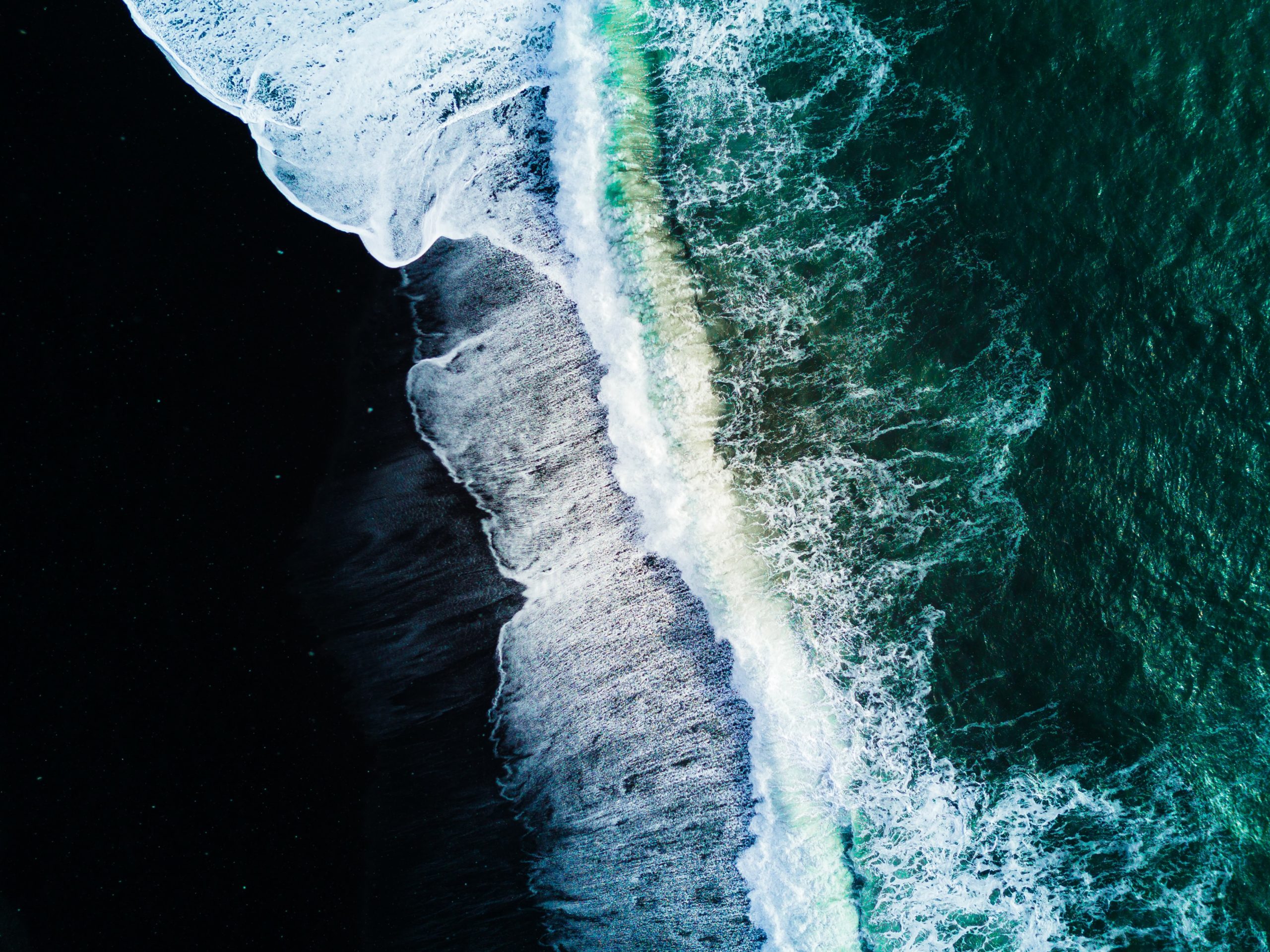
While it might seem counterintuitive to visit an area considered dangerous, there are certain safety precautions you must keep in mind at Reynisfjara. Signposts along the beach allude to ‘Sneaker Waves’; these have a habit of catching off-guard guests who venture too close to the water. More than capable of pulling an adult out with it, this water barely, a few celsius, is almost impossible to escape from.
These warnings must be taken as gospel, as anyone unlucky enough to be dragged out to sea at Reynisfjara will soon fall victim to dangerous rip currents, deteriorating a dire situation further. Even on apparently calm days, there is no telling how the waves will behave; some roll in small, others surge up the sand as if from nowhere, shocking all who witness it. If ever there was a place to supervise your children closely, this would be it.
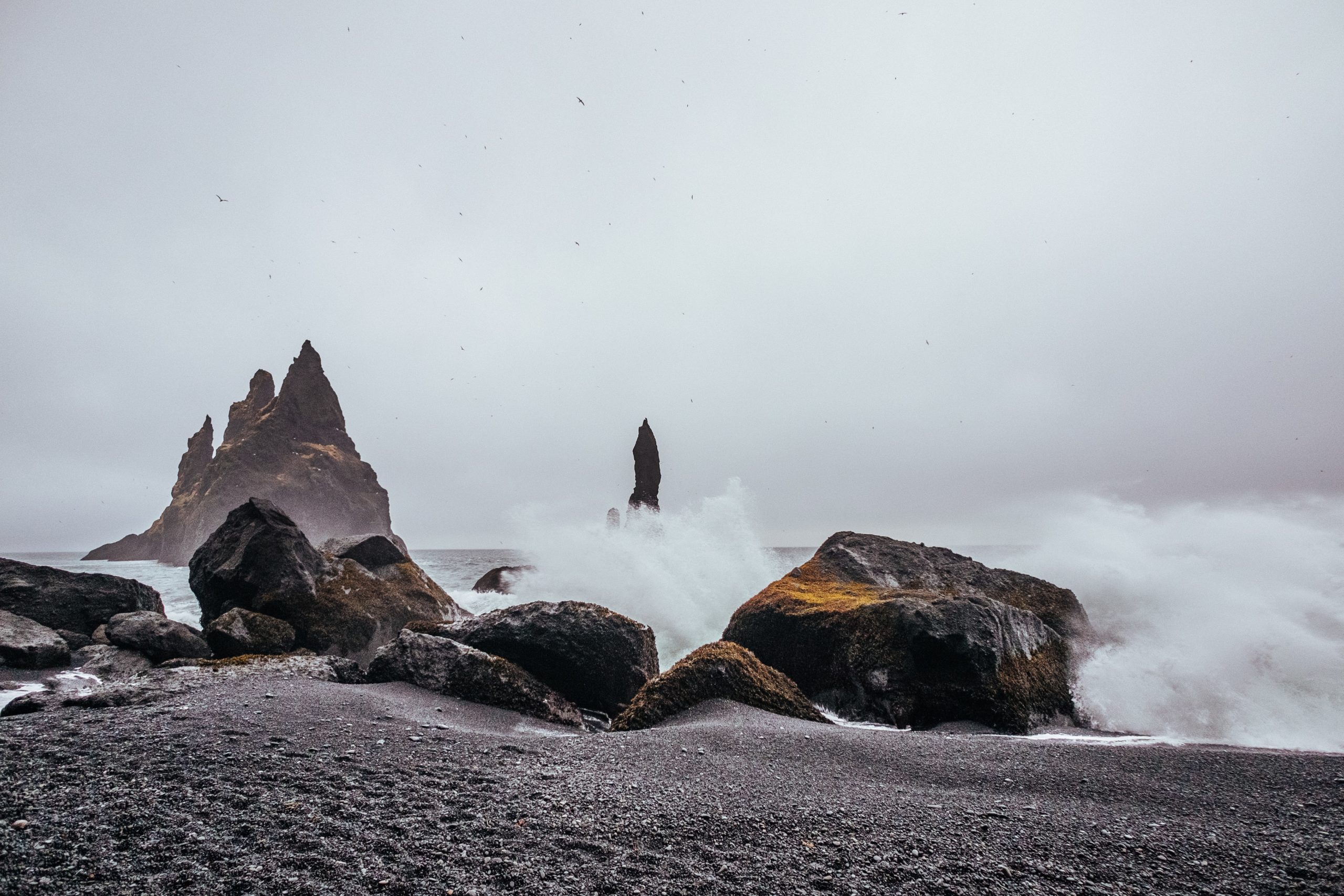
A quick search on YouTube will persuade you that, indeed, the beach poses an all-too-real threat for those who dismiss the warning signs as overly cautious. Regardless of how epic the surrounding area might be, the North Atlantic ocean is notoriously unpredictable, cold and more-than-capable of reaching right up the shore. If there’s a lesson here, make it this; don’t ever turn your back on the water. Remain vigilant at all times.
While there is no question Reynisfjara is one of Iceland’s most beautiful sites, it is imperative to respect the beach from a distance that ensures the safety of your party. Unfortunately, fatal accidents have occurred at the site in the past, which should only go-to-show how vital it is to trust the mandated advice.
Do not assume the area is safe just because others at the beach act like it’s so, and avoid visiting during bouts of rough weather. Iceland’s nature is a sight to behold, but never at the expense of one’s life.
Does Iceland have other black sand beaches?
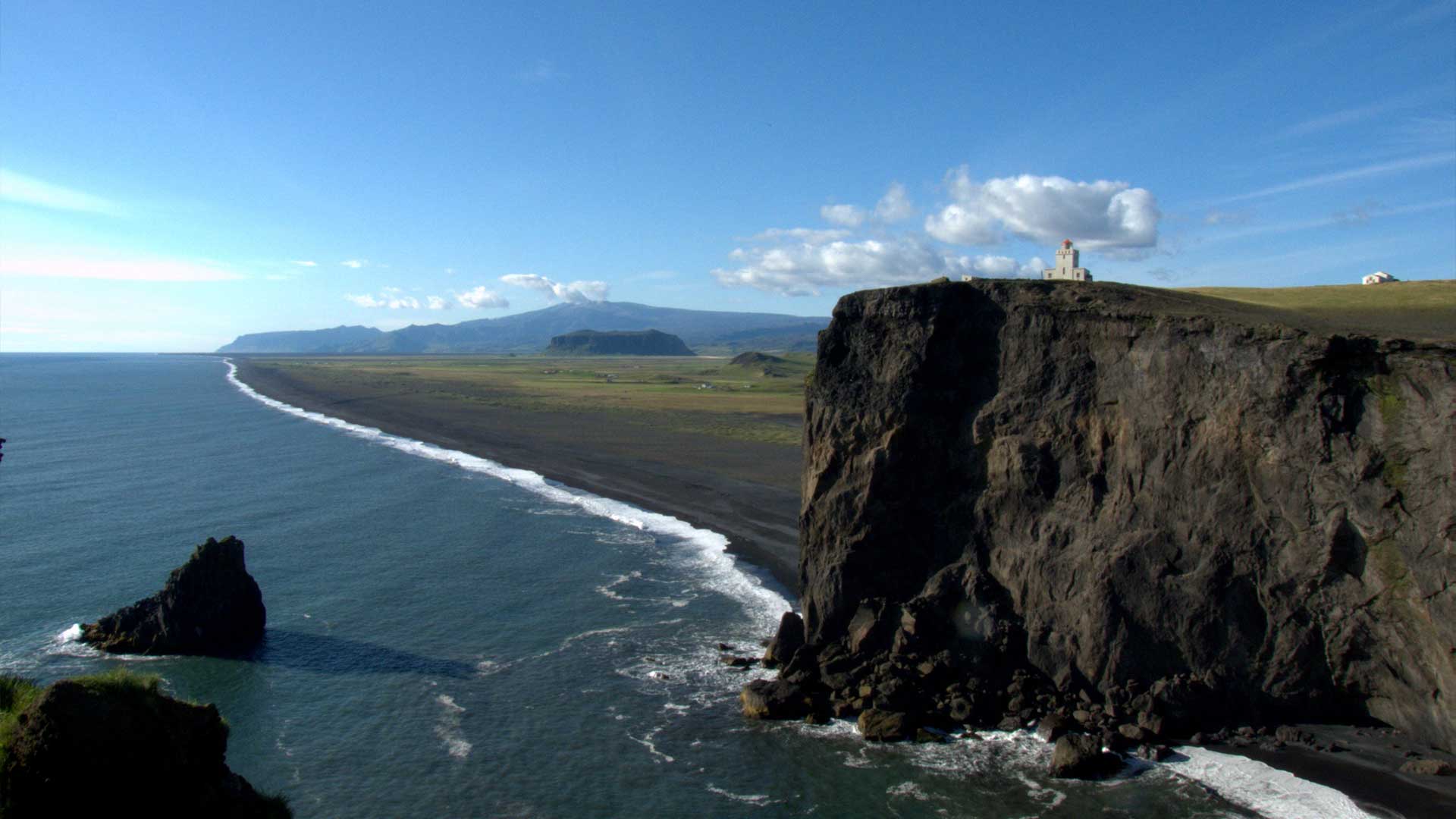
Yes, you can find black sand beaches all around the country, and many are arguably just as beautiful as Reynisfjara. In truth, most of Iceland’s beaches can be constituted as ‘black sand’, though some are more famous than others. Make sure to get out and explore during your time here—you might find a hidden gem, just to yourself.
In South Iceland, we have the sands surrounding Dyrhólaey promenade, the dark vastness of Solheimasandur, and further east, the iceberg-lined shores of Diamond Beach. While sightseeing on the South Coast, you can visit all these locations, best spread out over a few days.
Those remaining in Iceland’s Capital Region will want to pay a visit to Seltjörn, a black sand beach located on the sublime Seltjarnarnes Peninsula. Home to Grotta lighthouse, this area is popular among stargazers, Northern Lights hunters, and anyone looking for a quick break from city life. A mere ten minutes drive from downtown Reykjavík, pack a towel and try out the soothing foot bath, free-to-use for all those in the vicinity of the lighthouse.
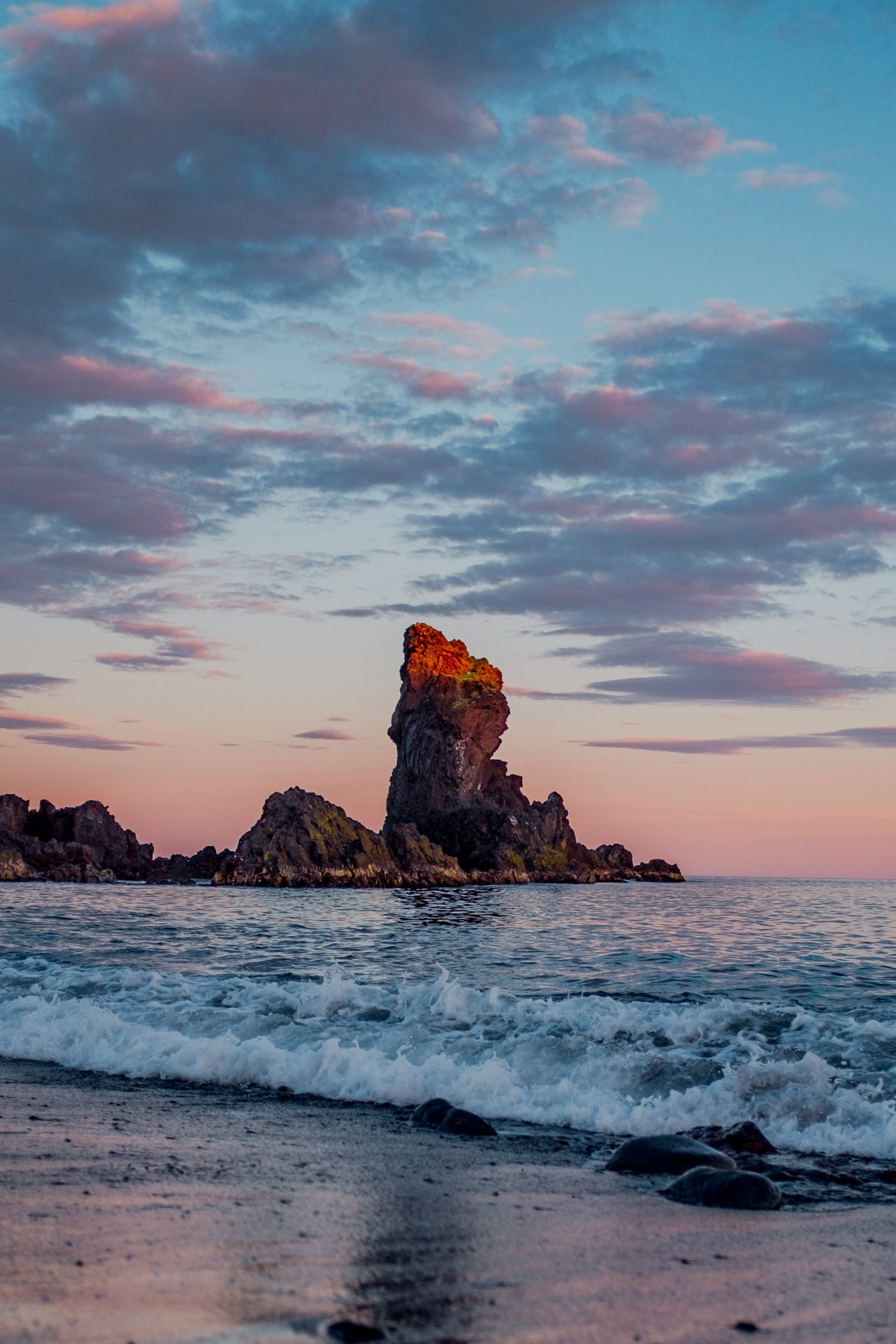
The Snæfellsnes Peninsula has its share of black sand beaches, the best known being Djúpalónssandur, with its gnarled volcanic rocks and small aquamarine ponds. Snæfellsnes offers stranger sights than black sand beaches, however. While it’s odd that golden sand is considered a novelty in Iceland, visitors can find just that at Skarðsvík Bay. On sunny days, this remote, albeit gorgeous site resembles a stretch of Mediterranean shoreline.
If you’re looking for something to blow all else from the water, then Rauðisandur, or Red Sands, in the Westfjords will suit your needs. As its name suggests, this 10-kilometre long beach boasts almost maroon-coloured sand that is, in fact, primarily composed of crushed scallop shells. Seals are known to frequently lounge in this area, so keep your eyes peeled for local wildlife.
What attractions are nearby to Reynisfjara in Iceland?
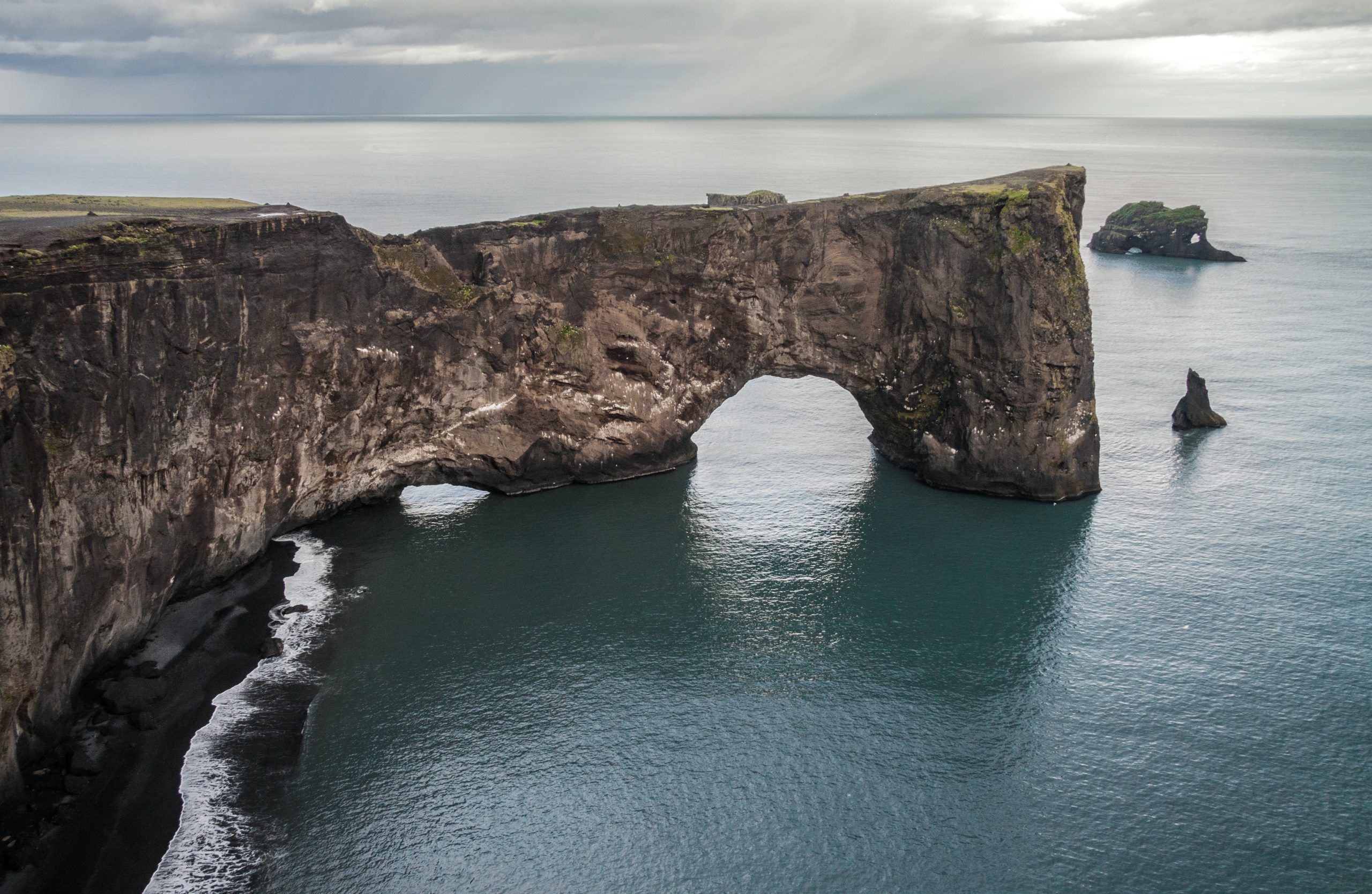
If you’re planning this most famous of Iceland’s black sand beaches, then you’ll want to make sure you check out other great attractions in the area. (Frankly, doing otherwise is downright negligent.)
Dyrhólaey promontory is one site worthy of a visit, beloved by guests and locals alike for its towering bird cliffs, photogenic lighthouse and impressive rock arch. Aside from the fact that South Iceland’s views are truly spectacular from Dyrhólaey, Atlantic Puffins nest here each summer, making it a must-stop on any sightseeing tour.
Seljalandsfoss and Skógafoss waterfalls are also found on the South Coast, both visible to passing drivers from the Ring Road. These two are considered among the most famous sights not just in South Iceland, but the entire country, so make sure to schedule time in for a visit.
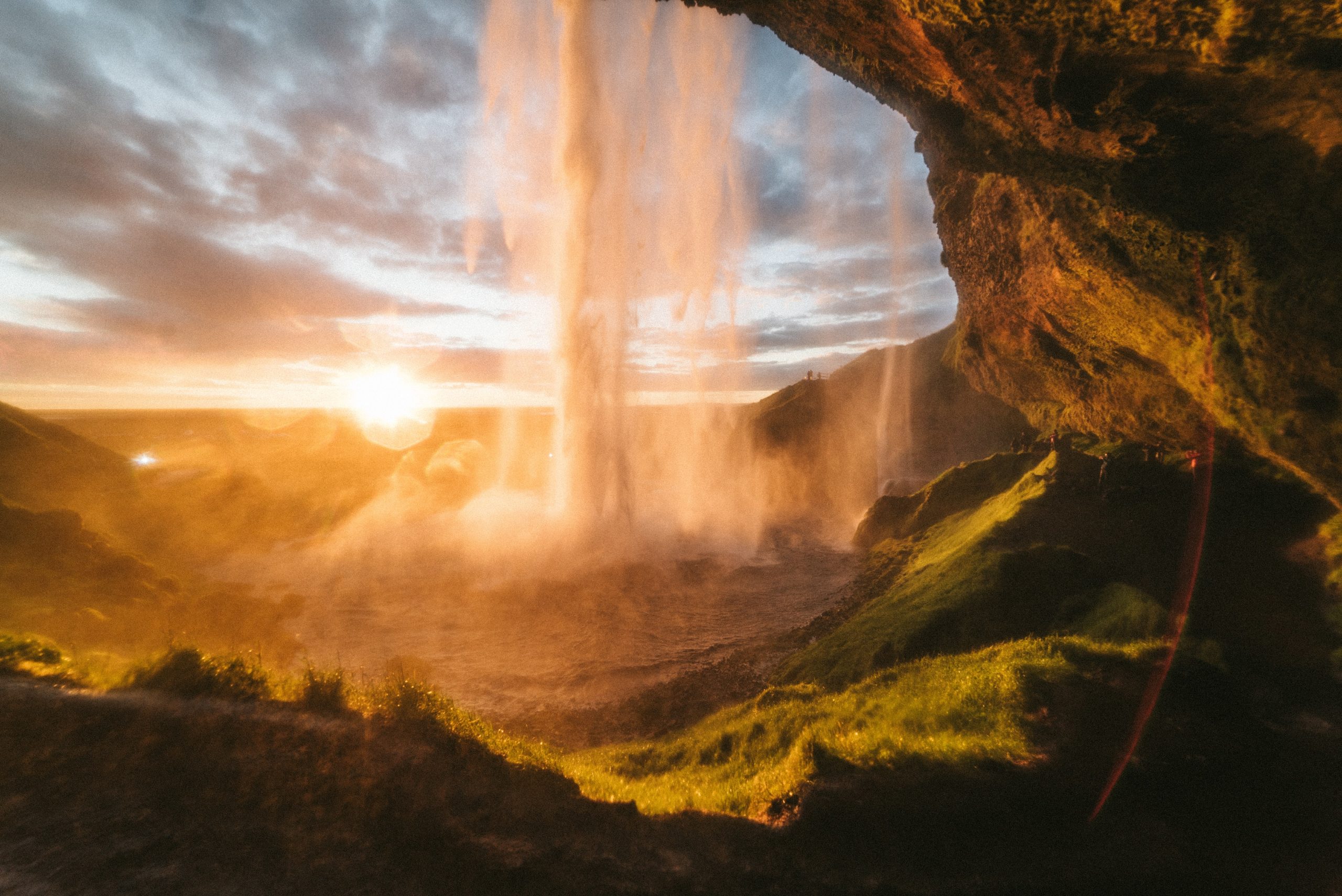
At sixty metres high (197 ft), Seljalandsfoss is a narrow waterfall that cascades over an ancient sea cliff, with a makeshift trail that leads directly behind the water. Only a five-minute stroll from Seljalandsfoss is another waterfall called Gljúfrabúi, hidden inside the crevasse of a canyon wall.
A short drive away, Skógafoss waterfall is much broader and more powerful than Seljalandsfoss, and as such, emits an enormous plume of steam at its base. Photographers use this water vapour to play tricks with the light, adding double rainbows to their images.
According to legends, the treasure of a former Viking resides behind Skógafoss waterfall. However, some locals embellish the tale further, claiming that this concealed gold is protected by a mean old troll afraid to step out from his cave into the light.
Whatever the case, you’ll appreciate stunning views of this colossal landmark, both from the lagoon at the base of the waterfall, and the viewing platform up top which can be reached by a wooden staircase.
What season shall I visit Reynisfjara in Iceland?
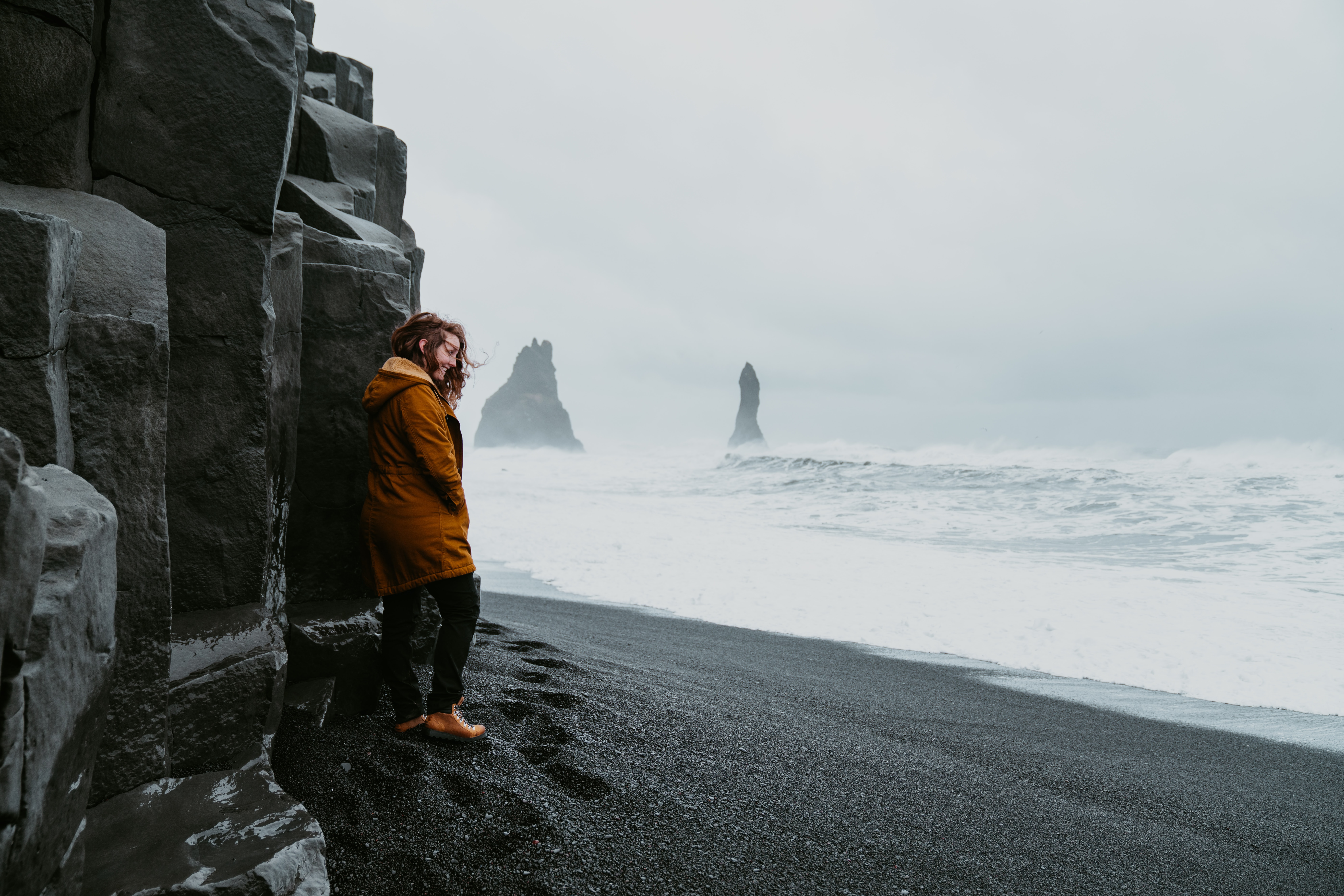
Given its easy accessibility just off the Ring Road, Reynisfjara can be visited regardless of whether you choose to visit in the summer or winter. Both seasons offer their advantages and disadvantages.
During the winter, the black pebbles and snow congregate together to form stunning contrasts beneath your feet, and there is no describing that breathtaking sensation of seeing the mountains above the beach cloaked in white.
Another benefit of visiting Reynisfjara during the winter is that you will have a better chance of avoiding the crowds. As aforementioned, Reynisfjara is one of Iceland’s most popular attractions, so extra consideration should be taken if you’re hoping to have the area to yourself, or as close to as possible.
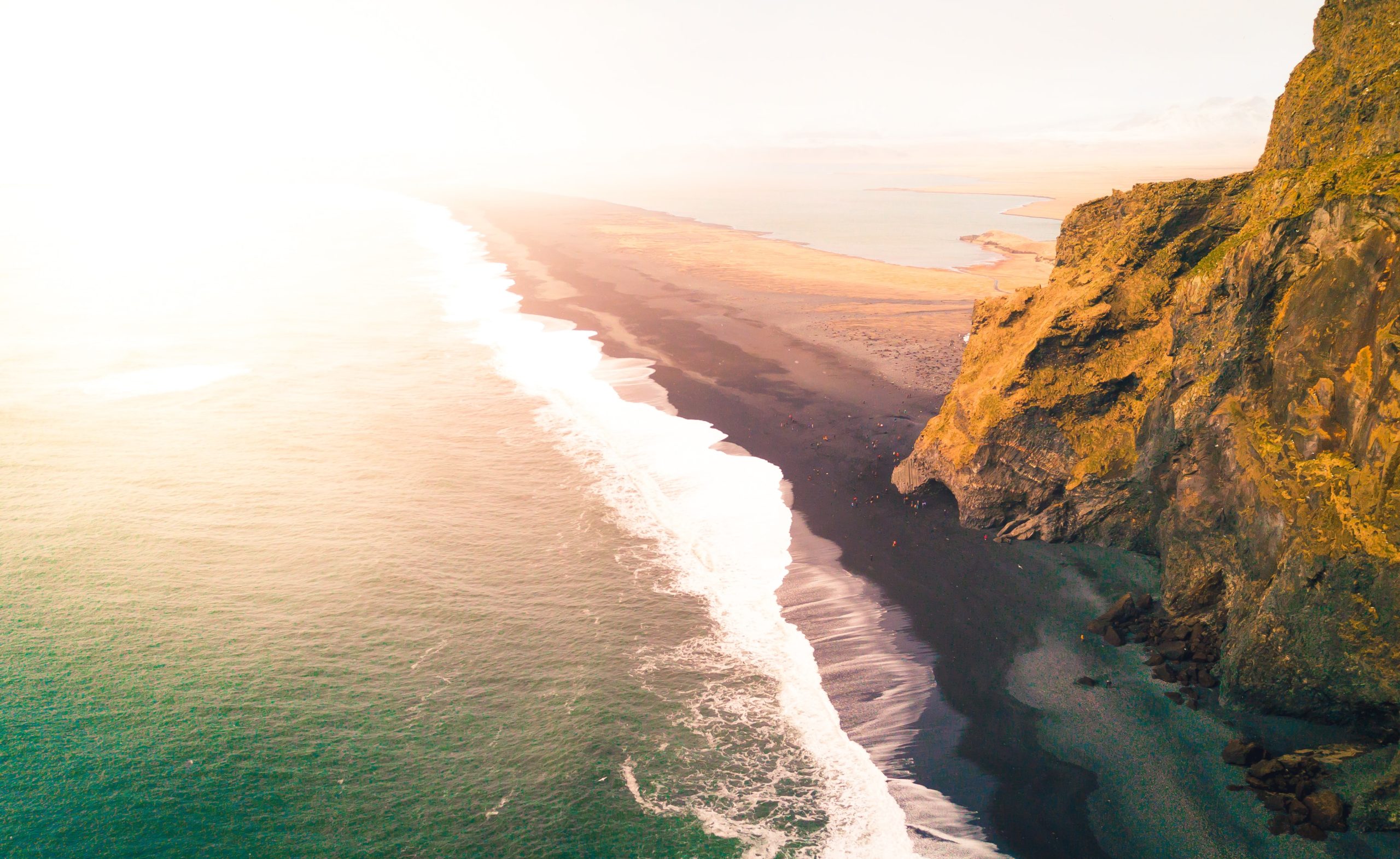
While you may find yourself joined by other travelling parties during the summer, you will have more daylight hours in which to appreciate the beach. Such an abundance of sunlight is perfect for those visitors looking to stretch out their journey, making sure to maximise their time at each stop.
On top of that, better weather will be advantageous for seeing further into the distance, allowing you a better view of the surrounding countryside. Given the breadth of beauty South Iceland offers, this point has more value than you might at first realise.
In summary, it matters not when you choose to discover Reynisfjara, only that you take the time to do so. Stepping onto its jet-black stones, breathing in that salty sea air, culminates in an experience like no other. With vast views over the ocean and encircling mountains, you’ll no doubt be pleased you made the extra effort.
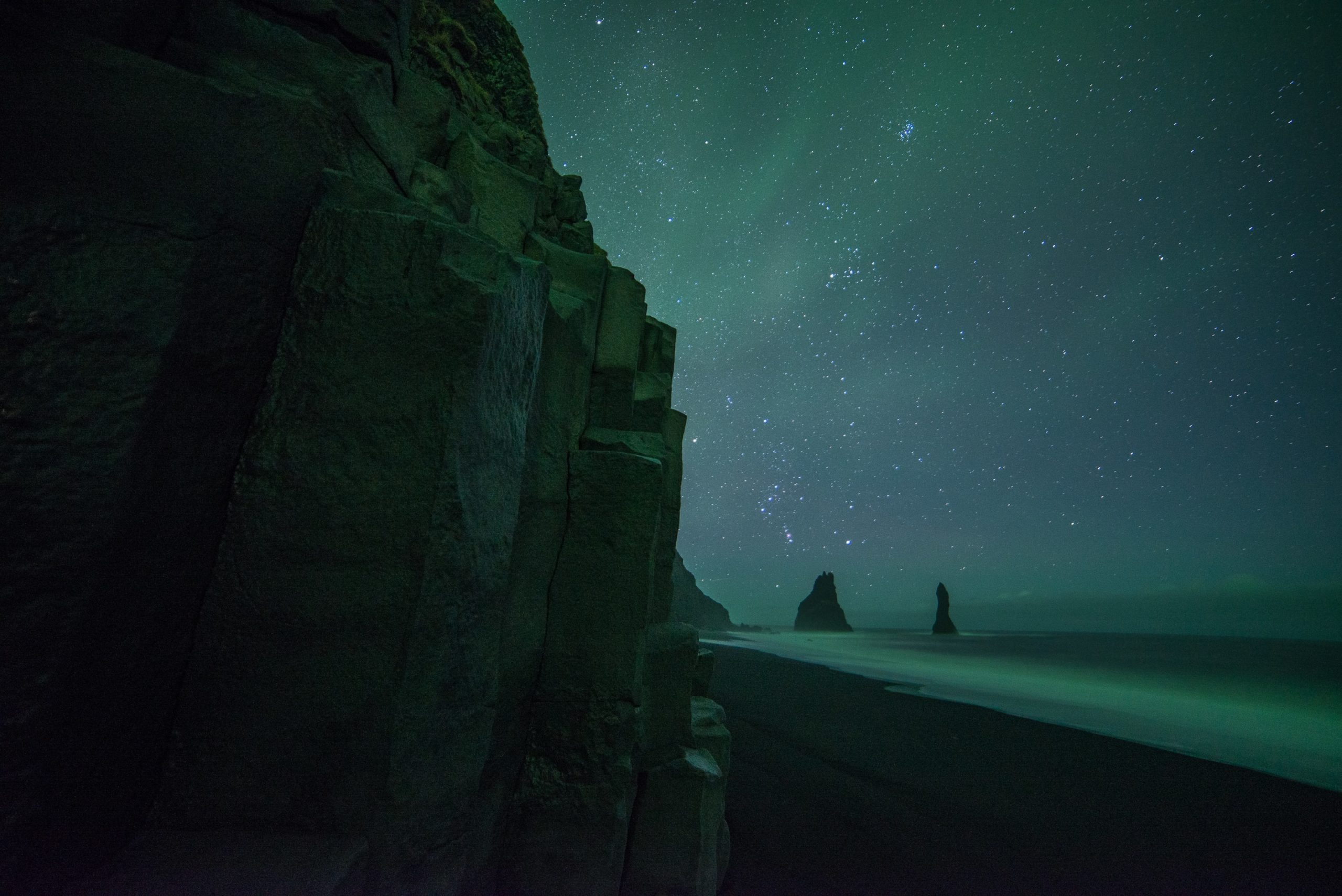
PLAN YOUR JOURNEY
Travelling to Iceland?
Check our overnight tours with a driver guide that includes a one night stay in a bubble.
*Starting from ISK 59.900 per person
